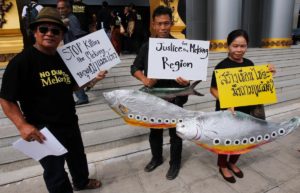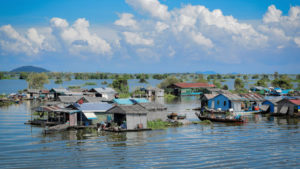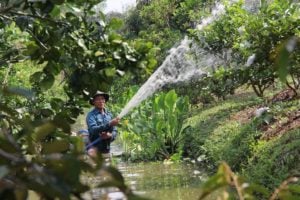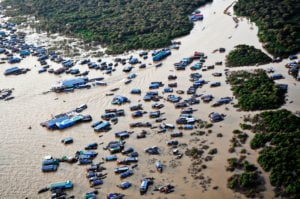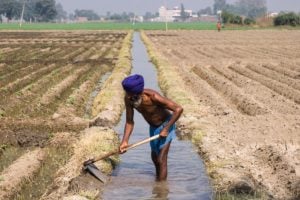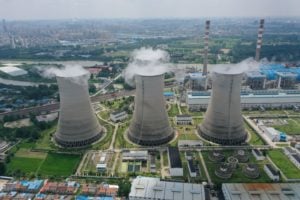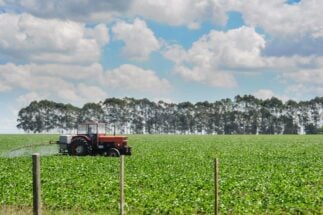Over the past three decades, Southeast Asia’s largest lake has declined precipitously. For centuries, the flooding of the Mekong would reverse the course of the river, causing Tonle Sap lake to swell up to six times its dry season size and creating what was once the most productive inland fishery on the planet.

However, hydropower, development and climate change have upended the flood cycle, devastating fisheries and agriculture and the people who rely on them.
Journalist Abby Seiff has been documenting the human toll of the Tonle Sap crisis for more than a decade, and will release Troubling the Water: A Dying Lake and a Vanishing World in Cambodia in March this year. The Third Pole spoke with her ahead of the book’s release about the state of the lake, its people and whether it can still be saved.
Troubling the Water discusses the human cost of an ailing Tonle Sap. Can you tell us more about what communities are facing?
Most of those living on the Tonle Sap are family fishers and among the poorest of the poor. They just don’t have the margins to support a few years of bad fishing, let alone the year after year after year situation we’ve seen lately. In practice this means people are deep in debt – they’re borrowing truly unsustainable amounts from microfinance institutions and individual lenders, which puts them in a really vulnerable position. People are forgoing healthcare and school to pay back loans. They’re in danger of losing their property.
The issues on the Tonle Sap are just a metonym for the ecological catastrophes across the Mekong and across the globe
The situation on the lake also means that a large portion of the population, particularly the younger population, is leaving for migrant work – both because fishing is no longer seen as a stable livelihood but also because families are desperate for cash to pay off debt. The fishers and their kids are either going to Thailand or moving to Cambodian cities to work at factories and construction sites. This type of migrant work carries a certain risk of exploitation, and the more desperate you are, the more risk you’re likely to face. Of course, none of this is unique to the Tonle Sap; we’ve seen this twinned debt-migration problem all over rural Cambodia, not to mention across much of the globe as climate change worsens.
Cambodia has ended dam building on the Mekong mainstream. How much damage has already been done?
This is certainly commendable but sadly, in terms of helping the Tonle Sap, it’s not something that’s likely to improve the situation – unless it serves as an example to Cambodia’s northern neighbours. The mainstream hydropower dams that have so reshaped the Mekong’s hydrology are in China and Laos, which continue to build new dams.
Meanwhile, across all Mekong countries, tributary dams still cause significant damage. In Cambodia, the Sekong, Srepok and Sesan – or 3S rivers – contribute up to a quarter of the Mekong’s flow, which helps the Tonle Sap river reversal that feeds the lake. There can be little doubt that the Lower Sesan II dam, which came online in 2017, has impacted downstream fish catch. Two other proposed dams on the 3S rivers have been effectively halted for years, though not officially. Should they be resurrected, the results would be devastating. Obviously, governments halting new construction is an important action, but much of the damage we’re seeing today is due to climate change coupled with those 13 upstream mainstream dams.
Much attention is given to the fisheries of Tonle Sap and the surrounding region, but what are some of the effects people are feeling in agriculture?
We’re entering the fourth year of drought now, which impacts all farmers. Drought has, of course, affected rice production in Cambodia, Thailand and Laos – though yield seemed to improve last year. The bigger issue is around the role upstream dams play. Researchers have noted that if water flow is regulated with agriculture in mind, the dams can play a helpful role by providing irrigation in the dry season and reducing excessive wet season flooding. But this requires a type of coordination that’s not currently happening.
What role, if any, can China play in saving Tonle Sap?
Better coordination would be a very good step to allow for an ‘operational model’ of the whole basin, which the Mekong River Commission (MRC) has long been pushing for.
China has been sharing more data, as well as notifications of water release, but could be doing much more. Improving on that would be a start, but the ideal would be if China and lower Mekong countries could come to an agreement whereby upstream dams were operated in such a way as to consider the needs of downstream countries. This means water would be held back or released in complete coordination so the collective needs are met – preventing downstream floods or mitigating against dangerously low rainfall – rather than those of a single country.
Tonle Sap’s issues are familiar both upstream and down. How are the issues in Tonle Sap unique?
You’re completely right that these problems sadly exist everywhere and they’re not at all unique. So, in some ways the issues on the Tonle Sap are just a metonym for the ecological catastrophes across the Mekong and across the globe, really.
I think what I’ve always found particularly tragic and striking about the situation on the Tonle Sap is that its success over the millennia has been because of its truly unique ecological phenomena. The lake is fed by a river that reverses course, twice a year like clockwork – and there’s nowhere else on Earth that happens. When the Mekong overflows in the rainy season, sending water gushing up the Tonle Sap river, the lake expands up to six times its [dry season] size. A lot of fundamentals of Cambodian culture – the Water Festival, Angkor, even the creation mythology – is tied back to this double movement. The lake pulses open and closed twice a year, like a heart, and now that pulse has almost died. To me, this is what makes the situation somewhat unique – even if the same realities, the hunger, the debt, the desperation, are unfortunately seen in so many places now.
The question people have been asking for years when it comes to Tonle Sap: Is it too late?
It certainly seems that way, though I’m wary of saying yes outright, because then it’s like, well, what’s the point of doing anything? Regardless of whether it’s ‘too late’, I do think a lot could be done at least to mitigate the impacts for those living on the lake. Whenever I asked fishers what might be done, the answers were pretty uniform. They wanted to see more enforcement of the fisheries law against large-scale illegal fishers and many wanted alternative vocational support that could help them pursue other opportunities apart from fishing.
With the cost of solar dropping dramatically, and climate change really wreaking havoc on hydropower operations, you’d hope that dam-building soon comes to an end. At the macro level, the type of coordination urged by the MRC and many campaigners would help immensely. My cynical self says, ‘Don’t hold your breath for that level of geopolitical cooperation.’ But I’d very much like to be proven wrong.


